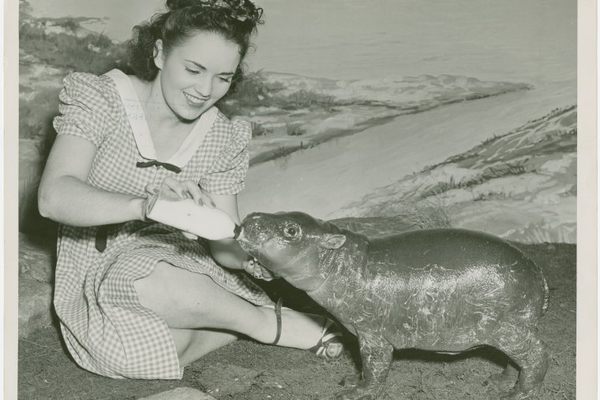What We Thought We Knew About Bunnies Was Wrong
Scientists have debunked a centuries-old legend about rabbit domestication.

Everyone was wrong about baby rabbits—including us. In 600 A.D., the story goes, Pope Gregory issued a proclamation to the Catholic world. Fetal rabbits, also known as laurices, aren’t meat, he said. Suspended in amniotic liquid, like fish in water, they shouldn’t be treated as animals of the land—and hungry Catholics shouldn’t think twice about snacking on them on fast days or Lent. So began rabbit domestication, with monks scrambling to set up grisly fetal rabbit factories. That’s how, after decades of selective breeding, the bunnies went from rangy, feral rabbits to tame and cuddly balls of fluff.
If it sounds far-fetched, that’s because it is. Pope Gregory never said such a thing, according to a new study of rabbit domestication published last week in Trends in Ecology and Evolution. And bunnies seem to have been domesticated much, much earlier, during the last ice age. Archaeologists Evan Irving-Pease and Greger Larson, from the University of Oxford, were both familiar with the story. “I had cited it, colleagues of mine had cited it, it’s all over Wikipedia, it’s all over the web… but it turns out that the modern story is a complete house of cards,” Larson said, in a statement. “What was really interesting to me then was why nobody’s really thought about it or been critical about it.”
Looking at the story with new, skeptical eyes, Larson and Irving-Pease found that scientists of the past had confused Pope Gregory with St. Gregory of Tours, a French religious historian who had made a passing reference to a man named Roccolenus. Roccolenus, he said, in “the days of holy Lent … often ate young rabbits.” The misattribution somehow led to a complete rewriting of rabbit history. Not only is the religious history wrong, the scientists report, but the science seems to be off, too. DNA evidence doesn’t narrow rabbit domestication to that time period and instead seems to have been a long, drawn-out process with no clear beginning.
In the paper, Irving-Pease and Larson suggest that it might have started all the way back in the Paleolithic era, when humans likely first hunted rabbits. In the millennia since, they’ve been kept and bred in Roman and medieval enclosures for ease of capture, and eventually as pets. “For the vast majority of human existence, no one said, ‘I am going to grab this wild organism and bring it into captivity and, voila, I will create a domestic one,’” Larson said. “We know a hell of a lot less about the origins of the things that matter most to us than we think we do,” Irving-Pease added.
























Follow us on Twitter to get the latest on the world's hidden wonders.
Like us on Facebook to get the latest on the world's hidden wonders.
Follow us on Twitter Like us on Facebook